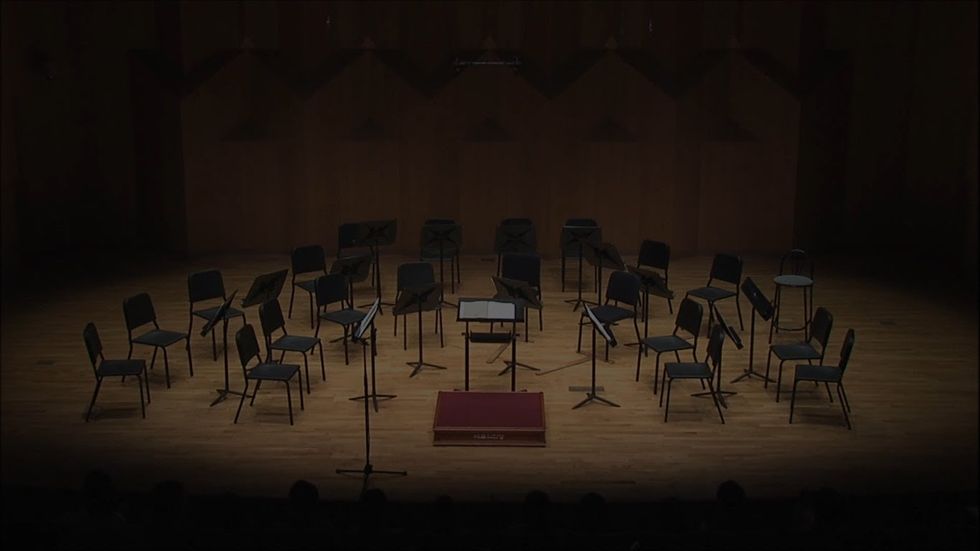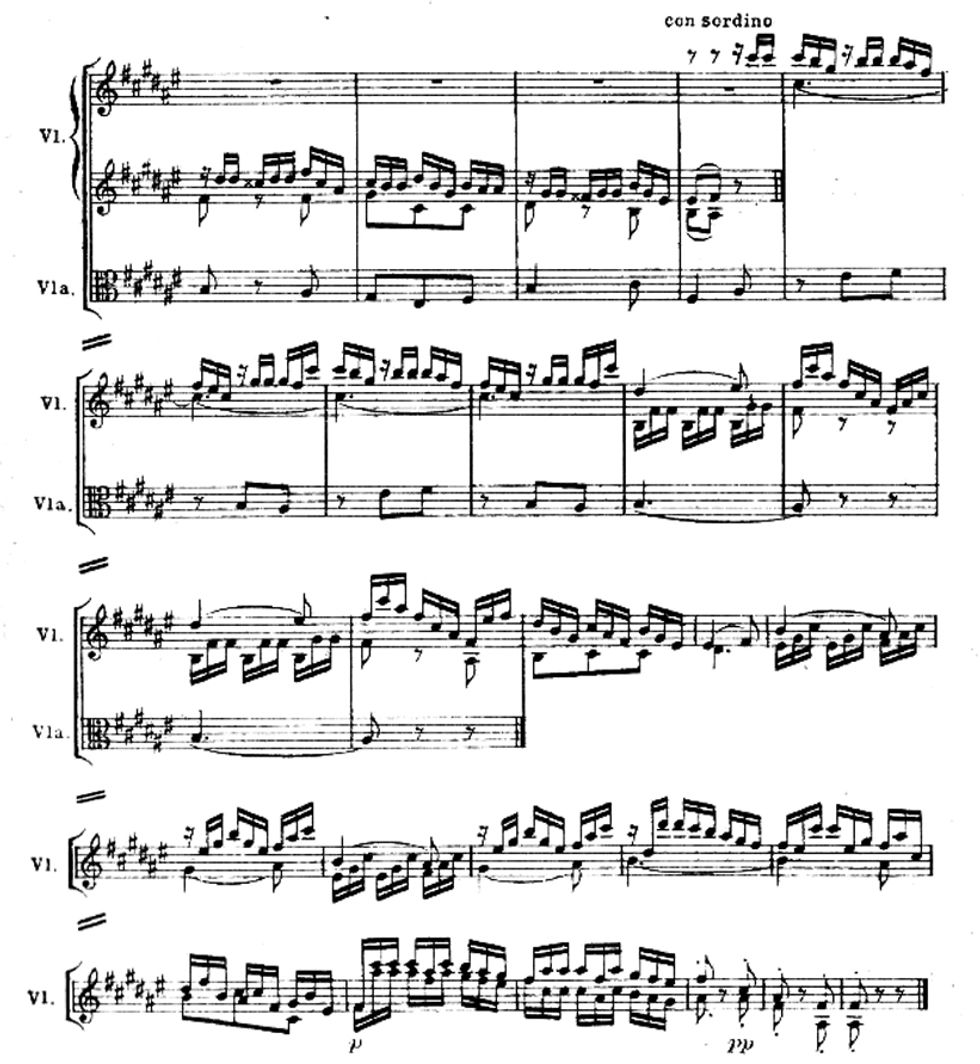Joseph Haydn was born in Rohrau, Austria in 1732, was known for composing works that had the ability to produce a quality of music that very little were able to imitate. In his time he was able to experience the dawn of Romanticism and helped shape the classical era through his works. Of all his compositions, the genre of symphonic continues to thrive to our modern age, such as Symphony No. 45 in F-sharp minor, the “Farewell Symphony.”
At the age of thirty-years old, he was the Kapellmeister to Prince Nikolaus Esterhazy. He was not only the employee of the prince, but also the employer of the great musicians he had to hire for the Prince for the summer. At one point there were not too many complaints about being there, until the musicians started to become restless and miss their families. They looked to Haydn to help them and Haydn, wanting to help, did just that. He composed a symphony for two oboes, two horns, and strings where in the final movement of the piece there is a pause and suddenly an Adagio begins.
As the movement continued, one by one each musician blew out their candles and walked out until it was only Haydn and Luigi Tomasini playing the violin. They eventually followed suit and left, with the Prince’s approval to leave. It will continue to go down in history as the dawn of Haydn’s mature compositions. It was quite unusual for him to choose f-sharp minor to be the key of the piece. The first movement of the piece is in f-sharp minor, the second in A major (relative major), third movement F-sharp major (parallel major), and the fourth movement is in f-sharp minor ending on a F-sharp major chord.
The first movement, Allegro assai, is in ¾ time and begins on the tonic of f-sharp minor. The first movement of a symphony during the classical period tends to be in “sonata form” and the movement gives us strum und drung. In Figure 1, the theme is outlined in the first violin and the syncopated rhythm underneath creates this dramatic affect. When the second theme is mentioned it almost seems to blend in with the main theme because there is not much difference between the themes except for it modulating to the dominant key of c# minor.
Figure 1 opening theme of Allegro assai Violino I
The recapitulation introduces a third theme instead of keeping the standard sonata form and bringing theme one back at the end of the piece.
The second movement, Adagio, is in ⅜ time in the relative major of A Major. What was odd about this movement was that is was also in sonata form. The structure of a Haydn symphony is normally first movement fast (sonata form), second movement slow, third movement minuet-trio, and the final movement is fast. The muted violins give a “hiccup-like” motif with grace notes on and off the beats in both the melody and accompaniment parts. We have a Lombardic rhythm that appears in the violins in measure 4 (Figure 2).
Figure 2 opening theme in Violin I
The third rhythm type comes in mm. 17-19 in the violins once again (Figure 3). It does have a moment where it doesn’t seem to know if it wants to be in b minor or C Major.
Figure 3
Before it was clear that we were in b minor, but in Figure 4 we see that Haydn moves up a step. If we look at the fermata measure we see the notes of the chord are D B E# G. It’s safe to assume it’s a V7 chord (G B D F) of C Major. He keeps using the E# though after the chord and changes back to E natural. Haydn doesn’t give us the satisfaction of a true C Major chord but instead gives us the dominant seventh of the chord. Once he does that he transitions back to b minor with the E-natural given.
Figure 4
The third movement, Minuetto: Allegretto-Trio, is in ¾ time. The minuet is usually a movement where the composer tries to not put outlandish or risky things within it, but Haydn is not a typical composer. He puts the movement in F# Major which is rare and possibly the only one of its kind to exist. It does make sense to have this key mentioned in the piece being the parallel major of f# minor, but this movement was supposed to be neutral, not complicated. Just when we think the piece is going to be in F# Major Haydn pulls a fast one and inserts a D Major harmony in the first phrase in m. 3.
If it was the Romantic period (1825-1900) then it would make sense because the use of chords within a phrase is more free while the Classical period was more clearcut. It starts on the tonic, modulate to the dominant or relative/parallel major and then return to the tonic. Haydn broke all the barriers and took risks with this movement (Figure 5). He makes sure we notice it by adding a forte to the chod giving us a slap in the face.
Figure 5
The finale consists of the Presto in cut-time and the Adagio in ⅜ time and brings back elements that appeared in the past movements like a conclusion of a paper. The presto is in sonata form (repeated exposition, development, and recapitulation) ends on the dominant of f# minor. We then move onto the Adagio which is in A Major, the relative major of f# minor, and ends on F# Major. The Presto begins with a four bar structure which is very similar to the first movement and as it continues into the Adagio we see each player little by little leaves their spot. It starts off with the first oboe ending at measure m. 181, the bassoon at m. 197, second oboe at m. 204, string bass at m. 217, cello at m. 227, third and fourth violin at m. 235. We soon see the end of the viola voice and we are left with a violin duet ending the piece in a major key (Figure 6).
Figure 6 final measures of the Finale Presto-Adagio
Haydn's music will undoubtedly continue to live on, both for his revolutionary choices and style. He was a man known to be a kind hearted and creative genius, and he proved this by being empathetic to his employees and instead of speaking to the prince to take their leave he created a symphony that allowed them to do so. He shaped the Classical era through his unique symphonic structure and he continues to shape the music we know and love today due to his influence.





















